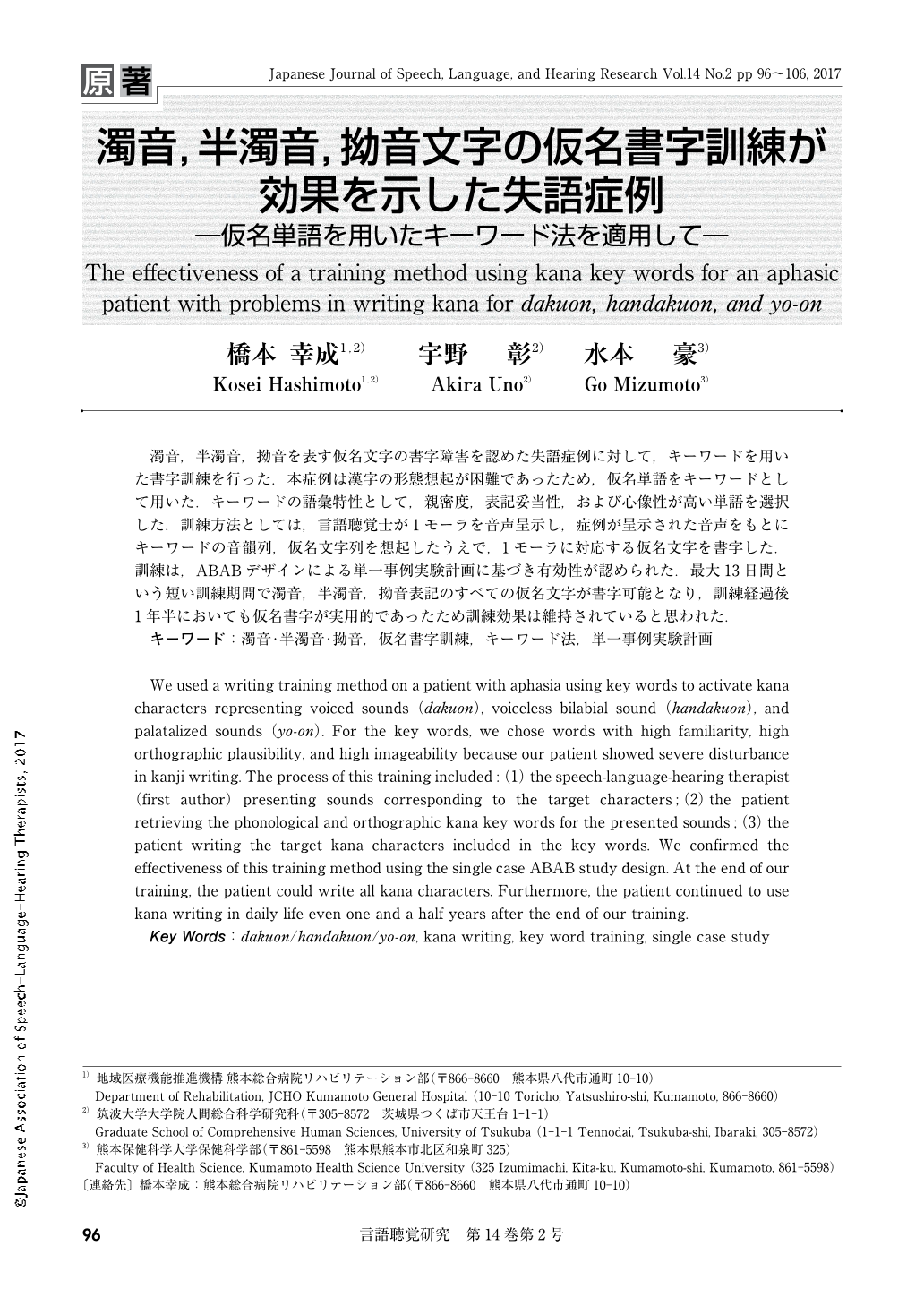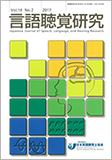Japanese
English
- 有料閲覧
- Abstract 文献概要
- 1ページ目 Look Inside
- 参考文献 Reference
- サイト内被引用 Cited by
濁音,半濁音,拗音を表す仮名文字の書字障害を認めた失語症例に対して,キーワードを用いた書字訓練を行った.本症例は漢字の形態想起が困難であったため,仮名単語をキーワードとして用いた.キーワードの語彙特性として,親密度,表記妥当性,および心像性が高い単語を選択した.訓練方法としては,言語聴覚士が1モーラを音声呈示し,症例が呈示された音声をもとにキーワードの音韻列,仮名文字列を想起したうえで,1モーラに対応する仮名文字を書字した.訓練は,ABABデザインによる単一事例実験計画に基づき有効性が認められた.最大13日間という短い訓練期間で濁音,半濁音,拗音表記のすべての仮名文字が書字可能となり,訓練経過後1年半においても仮名書字が実用的であったため訓練効果は維持されていると思われた.
We used a writing training method on a patient with aphasia using key words to activate kana characters representing voiced sounds (dakuon), voiceless bilabial sound (handakuon), and palatalized sounds (yo-on). For the key words, we chose words with high familiarity, high orthographic plausibility, and high imageability because our patient showed severe disturbance in kanji writing. The process of this training included:(1)the speech-language-hearing therapist (first author) presenting sounds corresponding to the target characters;(2)the patient retrieving the phonological and orthographic kana key words for the presented sounds;(3)the patient writing the target kana characters included in the key words. We confirmed the effectiveness of this training method using the single case ABAB study design. At the end of our training, the patient could write all kana characters. Furthermore, the patient continued to use kana writing in daily life even one and a half years after the end of our training.

Copyright © 2017, Japanese Association of Speech-Language-Hearing Therapists. All rights reserved.


